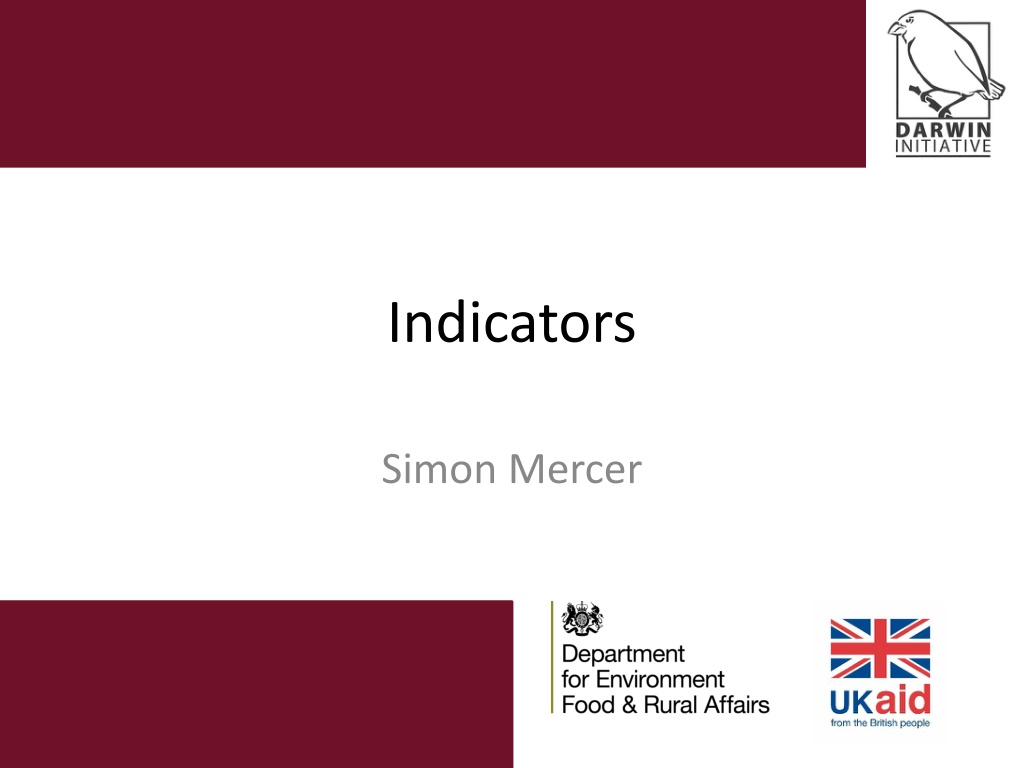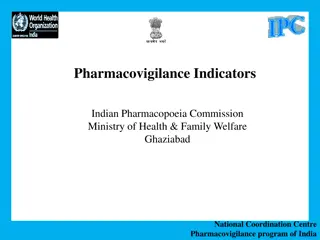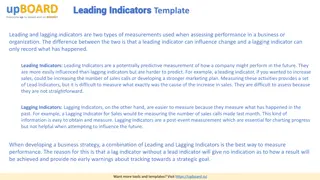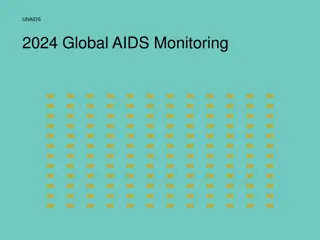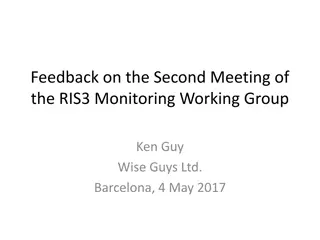Understanding Indicators in Monitoring and Evaluation
Indicators play a crucial role in monitoring and evaluation by providing signals of progress and success. They measure change, outcomes, and achievements of projects or programs. Different types of indicators exist, such as quantitative, performance, achievement, and accountability indicators. It is essential to choose indicators carefully based on their specificity, measurability, achievability, relevance, and time-bound nature. Utilizing indicators effectively can help demonstrate the effectiveness of your work and provide valuable feedback on performance.
Download Presentation

Please find below an Image/Link to download the presentation.
The content on the website is provided AS IS for your information and personal use only. It may not be sold, licensed, or shared on other websites without obtaining consent from the author. Download presentation by click this link. If you encounter any issues during the download, it is possible that the publisher has removed the file from their server.
E N D
Presentation Transcript
Indicators Simon Mercer
OECD/DAC Definition A quantitative or qualitative factor or variable that provides a simple and reliable means to measure achievement, to reflect changes connected to an intervention, or to help assess the performance of a development actor (DAC Glossary of Key Terms in Evaluation, May 2002)
What are indicators? Definition: provides a sign or a signal that something exists or is true Indicators are an essential part of effective monitoring and evaluation. They can provide vital information on performance, achievement and accountability. However, indicators are only one part of a comprehensive M&E system. They are only one method for collecting and analysing data and it is imperative that they be used when and where they provide meaningful information and insight
Why use indicators? Provide feedback on effectiveness of approach Demonstrate concisely and coherently the results of your work Q how do you know you are being successful? Q how do others know you are being successful?
Indicators measure change Indicators are variables whose value changes Impact Outcome An indicator focuses on a single aspect e.g an input, output or overall objective. Indicators must be carefully identified and selected to act as parameters for measuring the achievement of particular levels of results Output Activity
Types of indicators Quantitative: Data can be measured on a numeric scale e.g. change in household nutrition Performance: the effective or efficient operation of an activity e.g. Number of illegal incursions to protected area since gazettement. Achievement: the successful accomplishments of an activity, project or programme e.g. % of households that receive training in VSLAs Accountability: responsibility for the performance and/or achievements of the activity e.g. % of field stations submitting monitoring data to national focal point
Darwin Indicator levels OUTCOME OUTPUT Means of Verification linked to each indicator
What makes a good indicator? Do you know what is to be measured? S = Specific M = Measurable A = Achievable Do you know how to measure it? Is this something you have influence over and can be achieved in the time frame R = Relevant Does this relate to the project outcome/output? When will this indicator be measured that shows a change T = timebound
Direct vs. Indirect Indicators Direct indicators which refer directly to the subject they have been developed for (increase in household income of beneficiaries) Indirect indicators (proxy-indicators): which only refer in an indirect way to the subject: qualitative subjects, (behavioural change, living conditions, inclusion in governance structures) More cost-effective
Attribution vs Contribution Attribution = The ascription of a causal link between observed (or expected to be observed) changes and a specific intervention. Contribution = One of many processes/projects affecting change May require you to use a suite of indicators to better understand attribution For high level indicators attribution can be prohibitively costly aim for contribution under Darwin
Group Activity Step 1: Rate Indicators in terms of SMART criteria- giving each criteria a 0, 1 or 2 (full) (perfect score for each indicator is 10) Consider as well: WHAT (What can measure change) HOW MUCH (Magnitude of change) WHO (Target ) WHERE (Intervention area) WHEN (Time bound)
Group Activity cont. Step 2: Review the logical framework provided and for indicators that score less than 6 attempt to improve using SMART. Pay particular attention to low scoring Outcome indicators.
